
Going green and laziness seemingly don’t mix. Common sense indicates that lazy people don’t usually make drastic lifestyle adjustments unless they absolutely must. For them, it’s not about the efficient use of resources — it’s about avoiding the extra use of their time and energy to complete unnecessary tasks. But if you’re an oaf and happen to care about the health of our environment, you can still take measures to do your part. The 20 green tips below require minimal effort and just an inkling of concern about the greater good.
1. Choose soap wisely: Most soaps on the market are heavy with fragrances and chemicals, like petroleum, that have been proven harmful to the environment. The worst offenders are anti-bacterial soaps, which contain chemicals the EPA identifies as pesticides. So take an extra minute to scan the soap aisle of your grocery store to find more eco-friendly products, or simply look online.
2. Buy natural cleaning products:
That is, if you do clean, of course. Natural cleaning products have become more sought after in recent years and thus are now easy to find. They’re composed of natural and biodegradable ingredients, and not harsh chemicals like chlorine and phosphates. You can also use household products like baking soda and vinegar as unconventional cleaning alternatives.
3. Wash clothes in cold water: Your washer uses a great deal of energy (90 percent) for heating water. By washing your clothes in cold water, you’ll not only save energy, but you’ll also enable your clothes to last longer. And it’s all done with just the turn of a knob.
4. Wait between washes: According to the California Energy Commission’s Consumer Energy Center, the average American household washes 400 loads of laundry each year, resulting in the excessive consumption of both energy and water. Fortunately, laziness can help alleviate the problem — all you have to do is put off your washes an extra week each time. Not all of your clothes are really “dirty” anyway.
5. Take shorter showers;
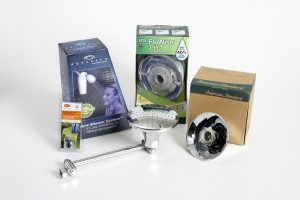 use a low-flow showerhead:
use a low-flow showerhead:
Consume less water by installing a low-flow showerhead. It’ll lower the cost of your water bill as you use more than 50 percent less water during each shower. It’s cheap, easy to install and provides more than sufficient water pressure. You can also take shorter showers. In other words, get in, get clean and get out. Then you’ll have more time to bum around on the couch.
6. Do the toilet tank trick: In no more than a couple of minutes, your old school toilet will be flushing more efficiently, saving up to 7,500 gallons of water per year. Just fill a half-liter bottle of water and insert it into your toilet tank and voila! You’ll be doing your part with each trip to the bathroom.
7. Adjust your thermostat, barely: 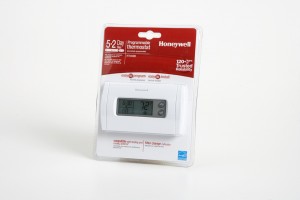
A one degree difference in temperature is hardly noticeable, so don’t hesitate to lower your thermostat by one degree during the winter and increase it by one degree during the summer. You don’t have to expend much of your own energy to reduce your home’s energy consumption.
8. Use energy-efficient LED light bulbs:
The use of LED bulbs will result in less energy consumed. Also, these bulbs last much longer than regular bulbs, meaning bulb-changing will be one chore you’ll worry about less frequently.
9. Use a smart power strip: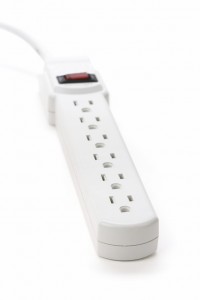
A smart power strip prevents the use of electricity by so-called “vampire” appliances and electronics when they’re turned off, stopping the waste of energy and lowering your electric bill. It’ll only take minutes for you to unplug and plug the cords around your home.
10. Use rechargeable batteries: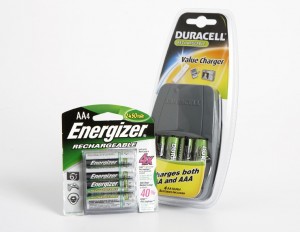
Improperly disposed batteries can release mercury, nickel, lead and cadmium into the environment. Stop continually buying, disposing and rebuying regular batteries; switch to rechargeable ones. Life will be easier in more ways than one.
11. Stop using water bottles: The excessive use of water bottles results in billions piling up in landfills each year, and billions of gallons of oil used for the production of new ones. Instead of buying 24-packs during each trip to the store, purchase a durable, long-lasting bottle and fill it up with tap or filtered water.
12. Buy reused, recycled and refurbished products: Scan sites like eBay, Amazon and Craigslist for cheap used items ranging from video games to appliances. Purchase recycled paper towels and toilet paper. Swap your old gently-used clothes for other gently-used clothes — which would be new to you — at a consignment store like Plato’s Closet.
13. Receive magazines and newspapers online: Magazines can be sent digitally to customers, combating the overuse of paper. You can receive publications like The Wall Street Journal online, or subscribe to Zinio, which creates digital editions of magazines. Of course, newspapers are accessible online, and a utility like the Kindle enables you to read books in digital form. No more long walks to the end of your driveway or trips to the bookstore.
14. Start a compost pile: Your food waste can become valuable fertilizer for your garden, ensuring that you won’t have to take out the trash nearly as often. Simply dump scraps in a pile and leave them to decompose. They’ll stabilize the soil’s pH, provide nutrients, benefit soil biology and clean up contaminants. Just be sure to exclude meat scraps, fish, bones, oils, fatty foods and dairy products.
15. Buy local fruits and veggies: A 2003 study from Iowa State University calculated that non-local fruits and veggies like lettuce, spinach, broccoli, carrots and strawberries travel more than 1,800 miles on average to reach your grocery store. The same produce from your local farmer travels no more than 56 miles on average. So buying local will encourage the reduction of greenhouse gases.
16. Use cruise control: Relax, take your foot off the pedal and put your car on cruise control. It’ll maintain a constant speed and thus save gas, improving mileage by seven percent according to an Edmunds.com study.
17. Carpool: 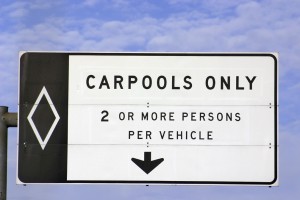
If public transportation isn’t easily accessible, then carpool to work with a coworker. You won’t have to drive the grueling round-trip half of the time, and you’ll be reducing carbon emissions and saving oil in the process. Yes, you can become lazier and greener at the same time.
18. Work from home: There’s nothing lazy about working from home. It takes self-motivation and self-discipline, probably more so than working in the office. But the plus side is that you can ditch your commute completely, giving you more time to absorb those 8 a.m. and 4 p.m. TV shows you would otherwise miss. Telecommuting has increased in popularity in recent years and the environment is one of the main beneficiaries.
19. Take online classes: Are you a lazy college student? Do you commute to school? Enroll in online classes and absorb the lectures from the comfort of your home. Research has shown that online classes reduce the carbon footprints of students. It’s another way to preserve the environment and avoid driving.
20. Staycation instead of vacation: Vacations typically involve lots of driving, gas, flying, reservations, junk food and emotional outbursts by children and their parents. Amid the hiking, swimming, sightseeing and general exploring, rarely do you have the chance to really be lazy. Plus, the entire trip takes a toll on the environment. Save the trouble by taking a low-maintenance staycation from your home or hometown. Here are several fun ways you can make it happen.
Read an interesting article on The Green Commute.



